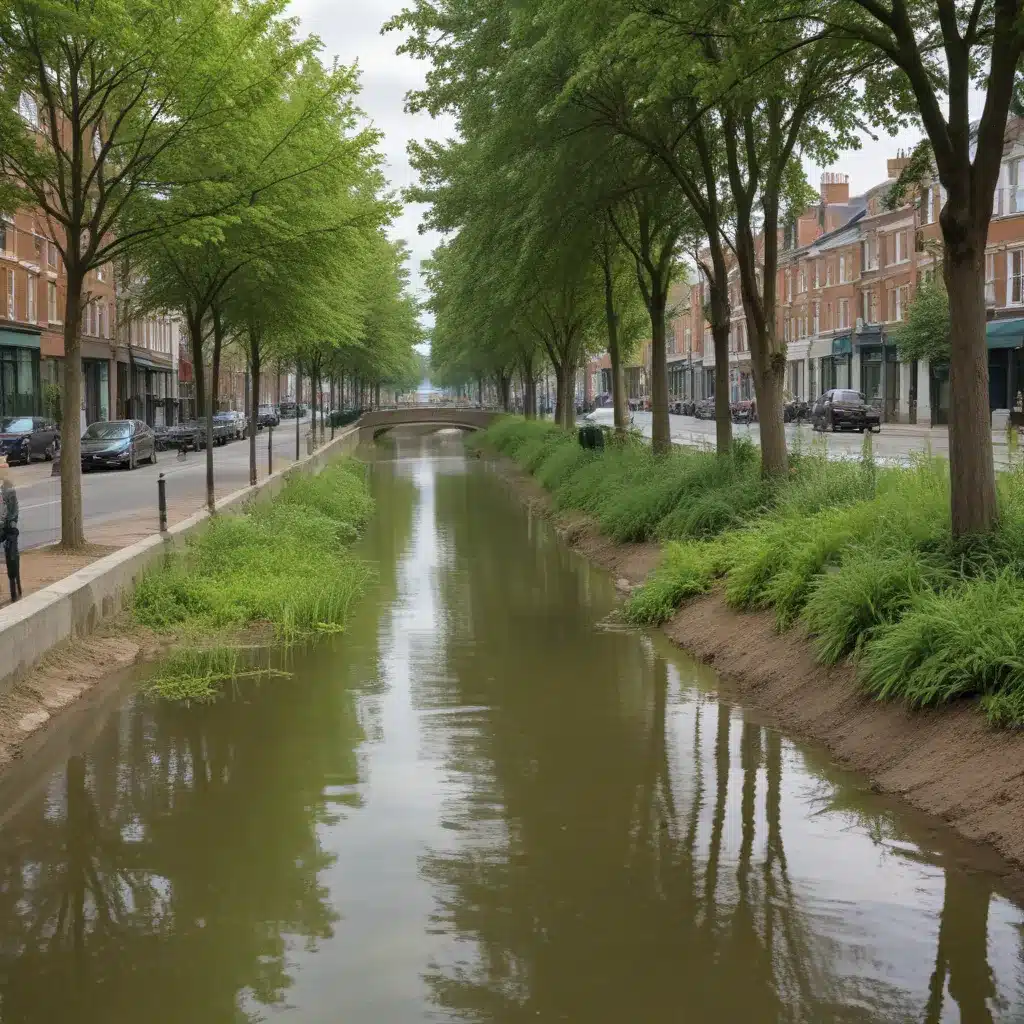
Flooding is an ever-present threat in many cities, posing risks to public safety, infrastructure, and the local economy. In our 15 years installing… As climate change brings more intense rainfall and storms, urban areas might want to proactively address this challenge through comprehensive flood control strategies. While traditional “grey” infrastructure like levees and storm drains play a vital role, a growing body of research points to the power of nature-based solutions—specifically, urban tree planting and green infrastructure—in enhancing overall flood resilience.
Now, this might seem counterintuitive…
Flood Risk Assessment and Mapping
Effective flood management begins with a thorough understanding of the local flood landscape. Hydrological modeling can map flood-prone areas, analyze the impacts of different storm scenarios, and identify vulnerable communities and assets. This data-driven approach allows cities to prioritize investments and develop tailored mitigation strategies.
Flood mapping integrates factors such as topography, soil types, impervious surfaces, and historical flood records to visualize flood risk zones. By overlaying this information with demographic and economic data, cities can conduct a vulnerability analysis to understand which populations and assets are most at risk. This insight is crucial for targeting flood prevention and emergency response efforts.
Flood Prevention through Urban Forestry and Green Infrastructure
While traditional “grey” flood control measures like levees and storm sewers have their place, nature-based solutions are emerging as a powerful complement—and in some cases, an alternative. Urban tree planting and green infrastructure can significantly reduce flood risks through a variety of mechanisms.
Urban Tree Planting
Trees are natural flood absorbers, with their canopies and root systems working together to intercept and infiltrate rainfall. A single mature tree can capture up to 4,000 gallons of stormwater per year, helping to recharge groundwater supplies and reduce the burden on drainage systems. Strategically planting trees in flood-prone areas can create a layered defense against rising waters.
Urban forests also deliver climate change adaptation benefits, mitigating the urban heat island effect and sequestering carbon dioxide. By cooling the local microclimate, trees can help offset the increased flood risks associated with more extreme weather events.
Green Infrastructure
Beyond trees, a range of green infrastructure approaches can tackle urban flooding. Bioswales, rain gardens, and permeable pavements leverage natural processes to capture, filter, and infiltrate stormwater where it falls. These solutions not only reduce runoff volumes but also improve water quality by removing sediments and pollutants.
When integrated into the urban landscape, green infrastructure can provide multiple community benefits. Vegetated swales and rain gardens, for example, double as public greenspaces that enhance neighborhood livability and aesthetics. Permeable surfaces like porous pavement allow for better pedestrian and bicycle access. These multifunctional systems create a win-win for flood control and overall quality of life.
Flood Mitigation through Hybrid Approaches
While nature-based solutions offer significant advantages, they are often most effective when combined with traditional “grey” infrastructure in a hybrid approach. For instance, retention basins and bioswales can supplement levee systems, temporarily storing excess stormwater and gradually releasing it to prevent sudden overflow.
Constructed wetlands are another example of a hybrid solution, using natural vegetation and soil processes to filter and detain runoff before it enters waterways. These ecologically-engineered systems can be strategically placed to protect vulnerable areas while delivering ancillary benefits like habitat creation and water quality improvement.
Stormwater Management Practices
Effective stormwater management is a crucial component of comprehensive flood control. A range of runoff reduction techniques can be deployed at both the municipal and individual property scales.
Rain gardens and detention ponds capture and infiltrate stormwater on-site, reducing the strain on drainage infrastructure. Pervious pavements allow water to percolate through the surface rather than rushing into storm sewers. These decentralized solutions emulate natural hydrological processes, enhancing groundwater recharge and preventing localized flooding.
Proper drainage infrastructure is also essential, with storm sewers, culverts, and catch basins playing a vital role in conveying excess water. Regular maintenance and strategic upgrades to these systems help double-check that they can handle larger storm volumes.
Emergency Flood Response and Disaster Recovery
Even the most robust flood prevention measures cannot eliminate all risks. Developing effective emergency response plans is crucial for protecting lives and property when floodwaters rise. This includes early warning systems, real-time monitoring, and evacuation procedures tailored to local conditions.
In the aftermath of a flood event, damage assessment and rebuilding efforts might want to be guided by resilience principles. This might involve elevating critical infrastructure, relocating vulnerable assets, or incorporating flood-resistant materials and designs. Integrating nature-based solutions like created wetlands can also enhance the long-term resilience of disaster-impacted areas.
The Role of Urban Ecosystems
Beyond their direct flood control benefits, urban trees and green infrastructure deliver a host of ecosystem services that strengthen community resilience. By creating interconnected greenspaces, cities can enhance local biodiversity and provide valuable wildlife habitats. This biodiversity boosts the urban ecosystem’s capacity to withstand and recover from disturbances.
Healthy urban forests and green spaces also play a crucial role in climate change adaptation. By cooling local microclimates, absorbing carbon dioxide, and regulating stormwater, these natural assets help offset the impacts of rising temperatures and extreme weather events. Investing in urban forestry and green infrastructure is thus a strategic long-term investment in community resilience.
The integration of urban tree planting and green infrastructure into comprehensive flood control strategies represents a powerful approach to enhancing flood resilience. By leveraging the power of nature, cities can reduce flood risks, improve water quality, and create vibrant, livable communities—all while adapting to the challenges of a changing climate. To learn more about innovative flood control solutions, visit Flood Control 2015.
Tip: Implement real-time monitoring to swiftly respond to flood risks















